
Louis Marie-Anne Couperus was a Dutch novelist and poet. His oeuvre contains a wide variety of genres: lyric poetry, psychological and historical novels, novellas, short stories, fairy tales, feuilletons and sketches. Couperus is considered to be one of the foremost figures in Dutch literature. In 1923, he was awarded the Tollensprijs.

The P.C. Hooft Award, inaugurated in 1948, is a Dutch-language literary lifetime-achievement award named after 17th-century Dutch poet and playwright Pieter Corneliszoon Hooft. The award is made annually.

Jakobus Cornelis (Jacques) Bloem was a Dutch poet and essayist. Between 1921 and 1958 he published fourteen volumes of poetry. In 1949 he won the Constantijn Huygensprijs, one of the country's highest literary awards, and in 1952 the P. C. Hooft Award for his literary oeuvre. In 1965, in rapidly declining health, he was awarded the highest Dutch-language literary award, the Prijs der Nederlandse Letteren. He was nominated for the Nobel Prize in Literature.
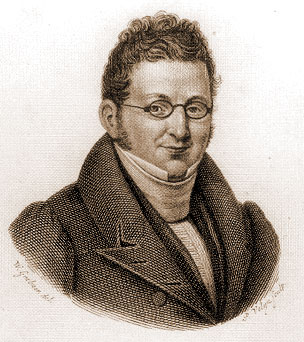
Christianus Petrus Eliza Robidé van der Aa was a Dutch jurist and author. He was the son of Pierre Jean Baptiste Charles van der Aa.
Robine Tanya van der Meer is a Dutch actress and model. She is best known as Meike Griffioen in Goede tijden, slechte tijden and for hosting the TV-show Model in 1 dag.

Pieter Cornelis Boutens was a Dutch poet, classicist, and mystic.
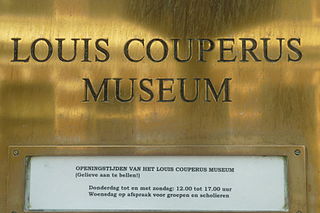
The Louis Couperus Museum is a museum located in the Archipelbuurt neighbourhood of The Hague. The museum celebrates the life and work of the Belle Époque writer Louis Couperus.
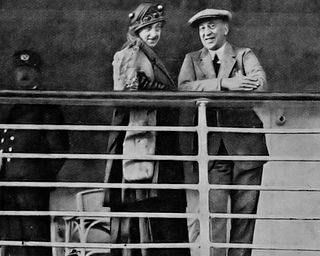
Elisabeth Wilhelmina Johanna (Betty) Couperus-Baud, was a Dutch translator. She was the wife of the Dutch writer Louis Couperus (1863–1923).
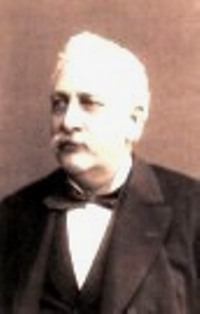
John Ricus Couperus was a Dutch lawyer, member of the Council of Justice in Padang, member of the High Military Court of the Dutch East Indies and the landheer of Tjikopo. He was also the father of the Dutch writer Louis Couperus and knight in the Order of the Netherlands Lion.
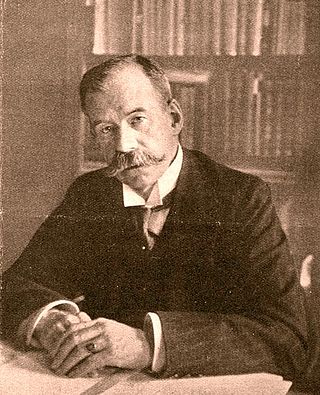
Conrad Theodor "Coen" van Deventer was a Dutch lawyer, an author about the Dutch East Indies and a member of parliament of the Netherlands. He became known as the spokesman of the Dutch Ethical Policy Movement. He lived at Surinamestraat 20, The Hague (1903–1915), former residence of John Ricus Couperus, his son writer Louis Couperus and the rest of his family (1884–1902).

Orchids, a collection of prose and poetry is a collection of prose and poetry written by Dutch writer Louis Couperus, which was published in 1886. Couperus published his debut, A ribbon of poems in 1886 with publisher J.L. Beijers. The rights to publish Couperus' books were taken over by publisher A. Rössing, who then published the second book of Couperus, Orchids, a collection of prose and poetry. After Rössing filed for bankruptcy in 1890 the rights were taken over by L.J. Veen, who would publish the second edition in 1895. In 1989 Veen would reprint Orchids when Couperus' complete works were published.
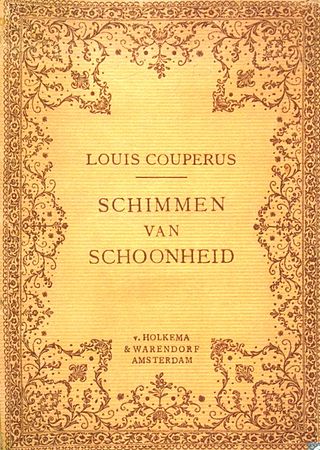
Schimmen van schoonheid is a collection of short stories, written by Louis Couperus and published by Van Holkema & Warendorf in 1912. It is not known how many copies were printed for the first edition, but this edition was in any case sold out by 1929. The second edition was published in 1962 by Querido in the so-called Salamander series.
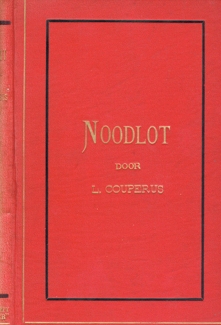
Footsteps of Fate is a novel written by Louis Couperus and published in 1891. Footsteps of Fate was first published in the Dutch magazine "De Gids". In 1891 the novel was translated into English by Clara Bell and published under the title Footsteps of Fate. The first two Dutch editions were published by Elsevier ; the second to eighth editions were published by L. J. Veen, except for the sixth edition, which was published by De samenwerkende Uitgevers. The English translation was published with Heinemann's International Library, under the authority of Edmund Gosse. His attention was drawn to this book by Maarten Maartens.

Ecstasy: A Study of Happiness is a novel written by Louis Couperus and published in 1892 by L.J. Veen in a first edition of 1,250–1,500 copies. A second edition was printed in 1894 and a third in 1905. Ecstasy was the first book of Couperus that was published by L.J. Veen, later his regular publisher. Couperus received a wage of 550 guilders for the first edition. Ecstasy was first published in the Dutch literary magazine The Gids. The book was translated into English by Alexander Teixeira de Mattos in 1919 and published by Dodd, Mead and Company.

Williswinde is a collection of verses written by Dutch writer Louis Couperus. The first edition was published by L.J. Veen in 1895. In 1904 Veen acquired full rights of Williswinde and 16 other works that were written by Couperus. For the first edition in 1894 Couperus received 200 guilders and the poems by that time had already been published in a number of Dutch newspapers and magazines. However Couperus had some difficulty to get the poem Williswinde published, as he wrote in a letter to a colleague, Smit Kleine. The book cover was designed by painter Ludwig Willem Reymert Wenckebach.
LGBT writers in the Dutch-language area are writers from de Lage Landen, that is Flanders and the Netherlands,
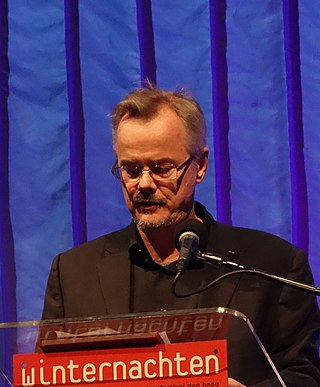
Jan van Aken is a Dutch writer, who worked in the cultural sector and in automation. He is currently a professor at the Schrijversvakschool in Amsterdam.

Titia Brongersma was a Frisian poet of the late 17th century. Her book, De bron-swaan, was published in 1686 and is virtually the only trace of her literary activity. She also gained prominence for excavating a dolmen at Borger, Netherlands in 1685.
Jacob Hiegentlich was a gay Dutch poet of Jewish descent. He committed suicide in 1940, at age 33, days after the German invasion of the Netherlands.

Een eerlijk zeemansgraf is the last volume of poetry published by Dutch poet J. Slauerhoff before his death.


















